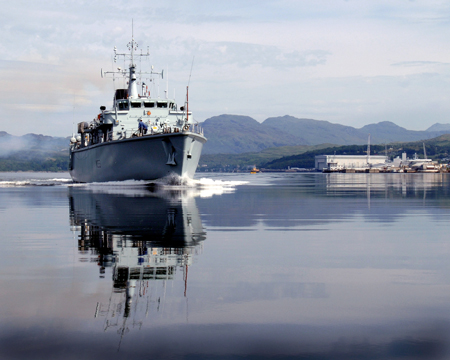Thales minehunting sonar continues vital role in Gulf operations

Two Royal Navy minehunters fitted with Thales sonar systems have recently set sail to continue a long-standing and strategically important presence in the Arabian Gulf to keep the busy sea lanes clear of ordnance.
Portsmouth-based HMS Brocklesby left the UK this month to embark on the 6,000-mile journey to Bahrain to take over from her sister ship HMS Middleton.
Brocklesby is fitted with Thales Sonar 2193, the world’s most advanced hull-mounted wideband minehunting sonar.
HMS Shoreham, a Sandown-class minehunter, also recently sailed from Clyde to take over from her sister ship HMS Bangor who has also been part of the minehunter team in the Gulf.
Shoreham operates with Sonar 2093, the most successful variable-depth multi-mode sonar in its field.
The ships will form part of a permanent minehunter presence in the region, working alongside coalition partners to provide reassurance to the region as well as sea-bed clearance, route survey and mine clearance operations.
The Royal Navy has described the combination of these sonars in the region as ‘world beating’.
Brocklesby’s commanding officer, Lieutenant Commander Paul Irving, said: “After a busy period of maintenance and a lot of hard work from my ship’s company it was a fantastic feeling to sail today to the Gulf.
“We are looking forward to getting into our primary role by ensuring we keep shipping lanes safe and working with our regional partners to provide maritime security.”
It’s not the first time Thales systems have been used in the Gulf. Read how the Navy used our capabilities to detect a lost million dollar sonar for the US Navy here.